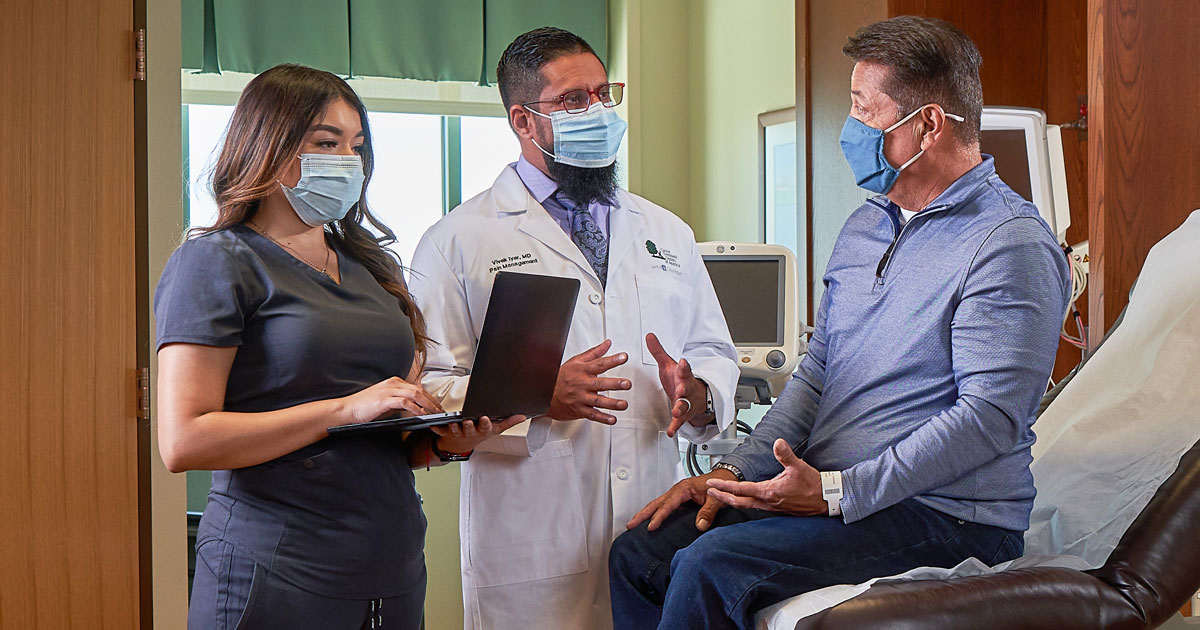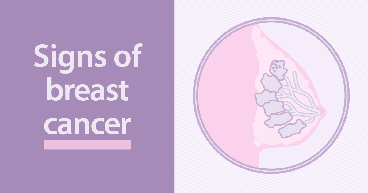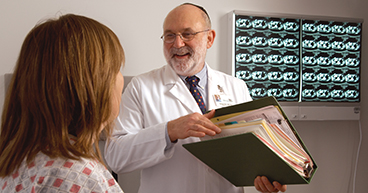
Despite outward appearances, the structure of men’s and women’s breasts are very similar. When it comes to breast cancer, the diagnosis and treatment of the disease are also very similar. The statistical differences between male and female breast cancer, however, are far more dramatic.
Besides skin cancer, breast cancer in women is the most common cancer diagnosed in the United States. Measured alone, breast cancer in men would rank behind at least 30 other cancers in the number of yearly diagnoses. Less than 1 percent of all breast cancers diagnosed in the United States are in men. In 2022, about 2,700 men will develop the disease, compared to 287,000 women, according to the American Cancer Society (ACS).
So why do so few men get breast cancer?
In this article, we’ll answer that question and explore other aspects of male breast cancer, including:
- Anatomic differences and similarities between men and women
- The unique set of challenges of a male breast cancer diagnosis
- How is male breast cancer diagnosed and treated?
- The stigma of shame a male breast cancer diagnosis may carry
- More interesting facts about male breast cancer
If you’ve been diagnosed with breast cancer and want to know more about the diagnostic and treatment options at Cancer Treatment Centers of America® (CTCA), call us or chat online with a member of our team.
Anatomic differences and similarities between men and women
Human breasts in both sexes have nipples, fatty tissue, breast cells and ducts. Men and women also share some of the same risk factors for breast cancer. Both sexes may have a family history of breast cancer or BRCA1 and BRCA2 mutations that may increase cancer risk. Obesity is another common risk factor for both sexes, and the human body, regardless of gender, produces the hormone estrogen, which at certain levels may increase breast cancer risk.
The incidence of breast cancer in men is far less than in women, in part because, although the breast tissue in both is similar, men have mainly fat and fibrous breast tissue called stroma, and they have fewer ducts and lobules.
When women’s breasts mature during puberty, they develop working lobules and milk ducts to produce and carry milk after childbirth. Most breast cancers in women develop in these ducts and lobules.
Inherited gene mutations may also increase cancer risk in both sexes, but they’re likely to affect men and women differently. While BRCA mutations significantly increase a man’s risk of breast cancer, men with these mutations are at a higher risk of prostate cancer than breast or other cancers.
And women generally produce more estrogen than men, potentially further increasing cancer risk. “One reason for its rarity in men may be related to their lower estrogen levels,” says Cynthia Lynch, MD, Medical Director of the Breast Cancer Center at CTCA® Phoenix.
Men with increased estrogen levels may develop a condition called gynecomastia, which may cause their breast tissue to grow or swell. “Gynecomastia is not a risk factor for male breast cancer, but when discovered, it does need to be differentiated from male breast cancer,” Dr. Lynch says. “Additionally, some conditions that predispose men to gynecomastia through increased estrogen levels may also predispose them to male breast cancer.”
The unique set of challenges of a male breast cancer diagnosis
The rarity of breast cancer in men, as with rare cancers in general, may create unique challenges for those who develop the disease and doctors who treat it. “Treatment of breast cancer in males is typically guided by studies that were performed in women with breast cancer,” Dr. Lynch says. “While there are few differences in treatment, there are some additional considerations when using hormone therapy in males with breast cancer.”
Other challenges further complicate the matter, including:
Men usually are not taught to screen themselves for breast cancer.
Most men are unaware of the symptoms of the disease.
Men who develop symptoms of breast cancer may choose to ignore them because of perceived stigmas and fear of emasculation.
Men usually are diagnosed with breast cancer at an older age and with the cancer at a more advanced stage, for these and other reasons, often leading to poorer outcomes.
Overall, men may have poorer outcomes than women due to being diagnosed at more advanced stages and at an older age. The average age of a man diagnosed with breast cancer is 68, while the average age of a woman at diagnosis is 62, and about a third of breast cancer cases occur in women younger than 55, according to the National Cancer Institute.
How is male breast cancer diagnosed and treated?
The symptoms of breast cancer in men are like those in women, including:
- A lump or thickening in or near the breast
- Changes in the size or shape of the breast
- Dimple or puckering on the breast skin
- Nipple turned inward
- Nipple discharge
- Changes to the appearance of the areola or breast skin, including scaly or read patches or skin that resembles an orange peel
Because men’s breast usually are smaller and have less tissue than women’s breasts, men may be better able to feel a lump or structural changes to the breast.
Just as with women, men with symptoms may undergo a mammogram, a low-dose X-ray designed to detect spots, lumps or abnormalities in the breast tissue. Men may also undergo an ultrasound, MRI or biopsy to help confirm a diagnosis and determine whether the diseased has advanced to metastatic breast cancer, in which cancer cells have spread to lymph nodes or distant parts of the body.
Also, as with women, male breast cancer treatment may include:
- Mastectomy, surgical removal of the breast
- Radiation therapy
- Chemotherapy
- Hormone therapy
- Targeted therapy
- Immunotherapy
The stigma of shame a male breast cancer diagnosis may carry
A breast cancer diagnosis may be emotionally devastating for both men and women. Patients may deal with a sense of loss, especially if surgery is required to remove a breast. They may also be struggling with body image and intimacy challenges.
Breast cancer in males may be quite distressing. According to a report published in 2018, titled, in part, Men With a “Woman’s Disease,” many male breast cancer patients felt stigmatized and shamed while visiting a clinic or doctor’s office and became self-conscious of their scars after surgery. Men may also experience more embarrassment, loneliness and anxiety and may be less likely to express emotions or share their experience in a support group.
Support groups for men with breast cancer can be found at the Susan B. Komen Foundation website, hisbreastcancer.org and The Male Breast Cancer Coalition.
“Given this is primarily a malignancy in women, studies have identified that men can feel isolated in their diagnosis,” Dr. Lynch says. “They also report feelings of embarrassment and emasculation. Raising awareness of male breast cancer is one way to help alleviate these feelings.”
More interesting facts about male breast cancer
- More than 80 percent of male breast cancers are hormone-receptor positive.
- More than 500 American men die from breast cancer every year.
- The lifetime risk for men getting diagnosed with breast cancer is 1 in 833, according to the ACS.
- Infiltrating or invasive ductal carcinoma is the most common type of breast cancer in men. Other breast cancers diagnosed in men include:
- Ductal carcinoma in situ
- Inflammatory breast cancer
- Paget disease of the nipple
- Klinefelter syndrome, a condition in which men are born with two X chromosomes, may produce excessive estrogen and increased risk of breast cancer.
If you’ve been diagnosed with breast cancer and want to know more about the diagnostic and treatment options at CTCA, call us or chat online with a member of our team.




